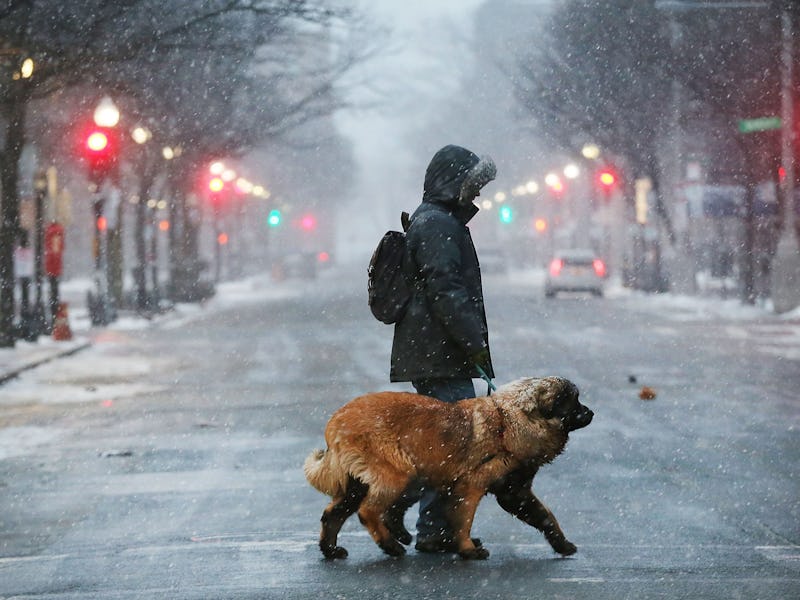Bomb Cyclone: What Today Will Be Like
Anticipate frigid temperatures and very strong winds.

While a “bomb cyclone” sounds more like a dance move horny teens would try out in the mid-2000s, today in 2017 it’s the force behind the very real Winter Storm Grayson currently pummeling the East coast. The storm is qualified as a bomb cyclone because of the immediate drop in atmospheric pressure that accompanies it: Between 1 p.m. on Wednesday to 1 p.m. on Thursday, the minimum central air pressure of the storm is anticipated to drop from 999 millibars to 946 millibars. For those hunkering down, that means intense winds, snowstorms, and frigid temperatures.
Blizzard warnings and emergencies are in effect in Delaware, Maine, Maryland, Massachusetts, New Jersey, Rhode Island, and Virginia. Across the Northeast, 2,000 flights have been cancelled and schools are closed in New York City, Boston, Philadelphia, and Washington D.C.
Digital forecast representing Thursday through Saturday.
Here’s what else to expect over the course of the storm:
- According to the National Weather Service, heavy snow and possible blizzard conditions will continue through the Mid-Atlantic coast into New England. Heavy snow in this region will continue overnight and begin to wane in the morning. By Friday morning, the storm is anticipated to travel northeastward into Southeastern Canada.
- Blizzard conditions are possible close to the coast in portions of the Mid-Atlantic and Northeast.
- NOAA states that the system “has the potential to produce strong, damaging winds, possibly resulting in downed trees and/or power outages.”
- The New York Times reports that New York City could receive five to eight inches of snow. Queens and Nassau County on suburban Long Island may receive up to 10 inches.
- As of Thursday morning, more than 40,000 people in Virginia and North Carolina already did not have power. Duke Energy told CNN that 8,000 people don’t have power in Flordia. State officials are worried that the effects of the storm will last through the week.
- By Friday, Boston and parts of New Hampshire are anticipated to be colder than Mars.
- High winds in eastern New England are anticipated to trigger power outages.
- NOAA warns that minor to major coastal flooding and erosion is possible in coastal regions by Thursday afternoon because of a combination of high tides and wave action.
- The National Weather Service wind advisory is currently in effect. Gusts between 45 to 60 miles per hour are anticipated.